Editing is the backbone of producing high-quality radio shows, whether for podcasts, or pre-recorded segments. Choosing the right software can make a world of difference in how quickly and effectively you can deliver polished audio to your audience. Below, we delve into some of the best software to edit radio shows, analyzing their features, pros and cons, and ease of use to help you make the best decision.
1/ Why edit your radio shows?
2/ Audacity
3/ Adobe Audition
4/ GarageBand
5/ Reaper
6/ Hindenburg Pro
7/ Logic Pro
8/ Pro Tools
Why edit your radio shows?
Whether you recorded a live broadcast, or specifically pre-recorded your content to make available to your audience, knowing how to edit your audio will allow you to:
- Add music and sound effects: create a specific mood or atmosphere by adding sounds and music to your content in post-production.
- Cut out mistakes: if you made a mistake during recording, you can easily cut it out! This process allows you to do multiple takes and select which one will make the final cut.
- Provide a professional listening experience: use various audio effects to fine-tune your voice, the volume, etc… this will give your listeners a more pleasant listening experience, and make your radio station sound more professional.
Audacity
Audacity is a free, open-source audio editing software, popular among hobbyists and professionals alike. Its versatility and wide range of features make it an excellent choice to edit radio shows.
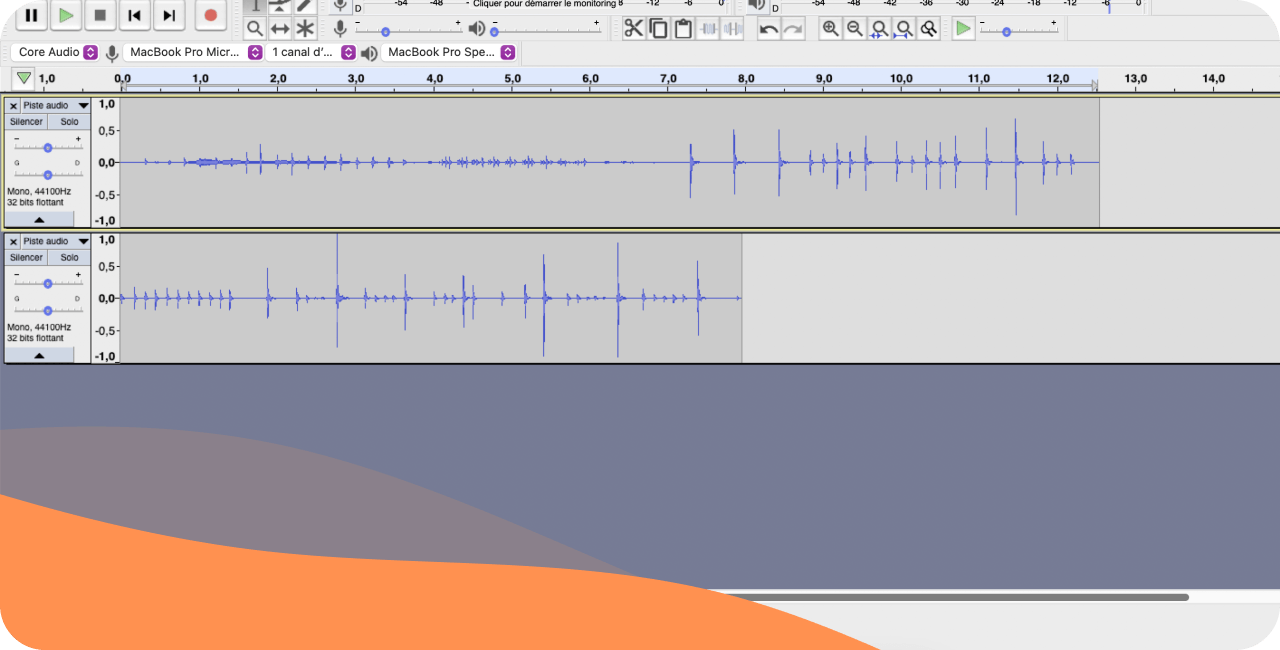
Key Features:
- Multi-track editing.
- Wide range of effects, including noise reduction and equalization.
- Supports numerous file formats (WAV, MP3, AIFF, etc.).
- Open-source with community-driven plugins and updates.
Pros:
- Cost: Completely free.
- Customization: Plugins can expand functionality.
- Cross-platform: Available on Windows, macOS, and Linux.
Cons:
- User interface: Outdated design may feel clunky to some users.
- Learning curve: Beginners may find it overwhelming at first.
- Limited advanced features: Not ideal for highly professional audio production.
Ease of Use: Moderate
While intuitive for basic editing, Audacity requires some learning to master advanced features. Tutorials and online guides are abundant, which helps ease the process.
Adobe Audition
Adobe Audition is a professional-grade audio editing software. Part of the Adobe Creative Cloud suite, it’s ideal for users looking for advanced editing capabilities.
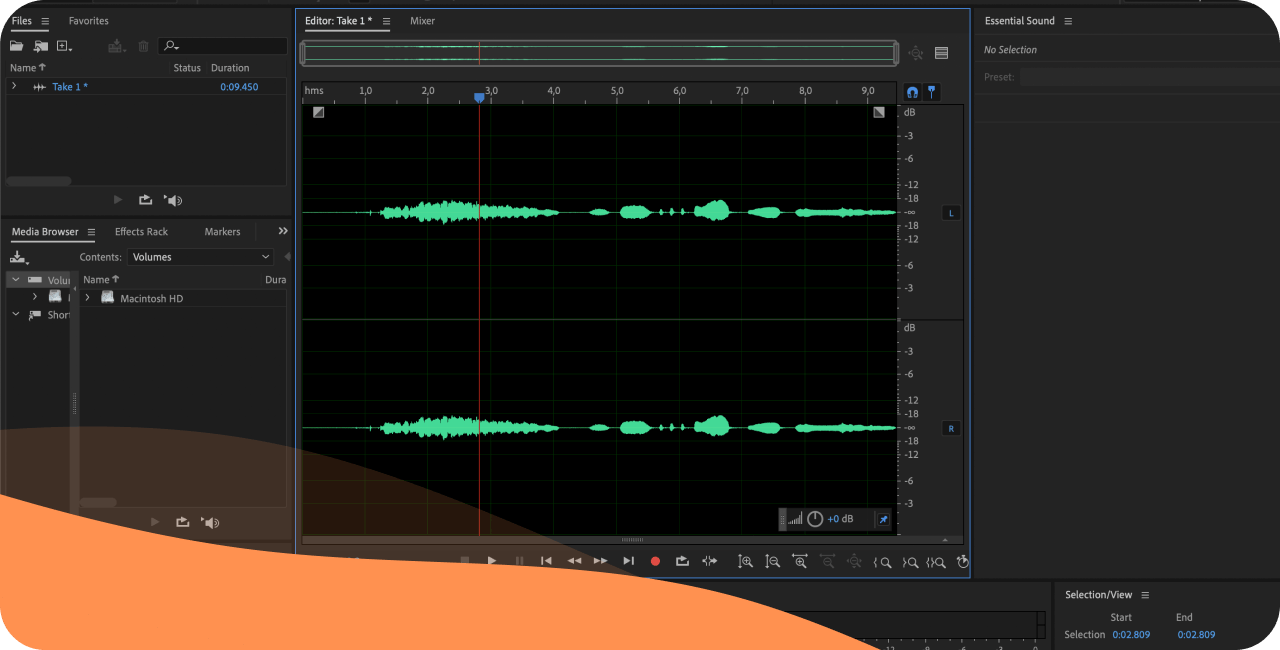
Key Features:
- Multi-track and waveform editing modes.
- Integrated noise reduction tools.
- Real-time clip stretching and spectral frequency display.
- Seamless integration with Adobe Premiere Pro for video production.
Pros:
- Professional tools: Advanced capabilities for high-quality audio production.
- User interface: Sleek and customizable.
- Cloud integration: Synchronize projects across devices.
Cons:
- Cost: Subscription-based, making it expensive for occasional users.
- Resource-heavy: Requires a powerful computer to run smoothly.
Ease of Use: Challenging
Audition is geared towards professionals, so beginners might find its interface and depth overwhelming. However, Adobe offers extensive tutorials and support.
GarageBand
GarageBand, exclusive to macOS and iOS users, is a free and user-friendly option that will allow you to edit your radio shows. Though often associated with music production, it’s equally capable of handling radio shows.

Key Features:
- Multi-track recording.
- Built-in sound library with effects and loops.
- Intuitive drag-and-drop interface.
Pros:
- Cost: Free with Apple devices.
- Ease of use: Beginner-friendly.
- Integration: Works seamlessly with Logic Pro for advanced users.
Cons:
- Platform limitation: Not available for Windows or Linux.
- Limited professional tools: Lacks advanced features for fine-tuning.
Ease of Use: Easy
GarageBand is perfect for beginners or those seeking simplicity. Its intuitive design minimizes the learning curve.
Reaper
Reaper is a powerful digital audio workstation (DAW) known for its affordability and flexibility. It’s a favorite among indie creators and professionals who need customizable tools to edit radio shows and audio content.
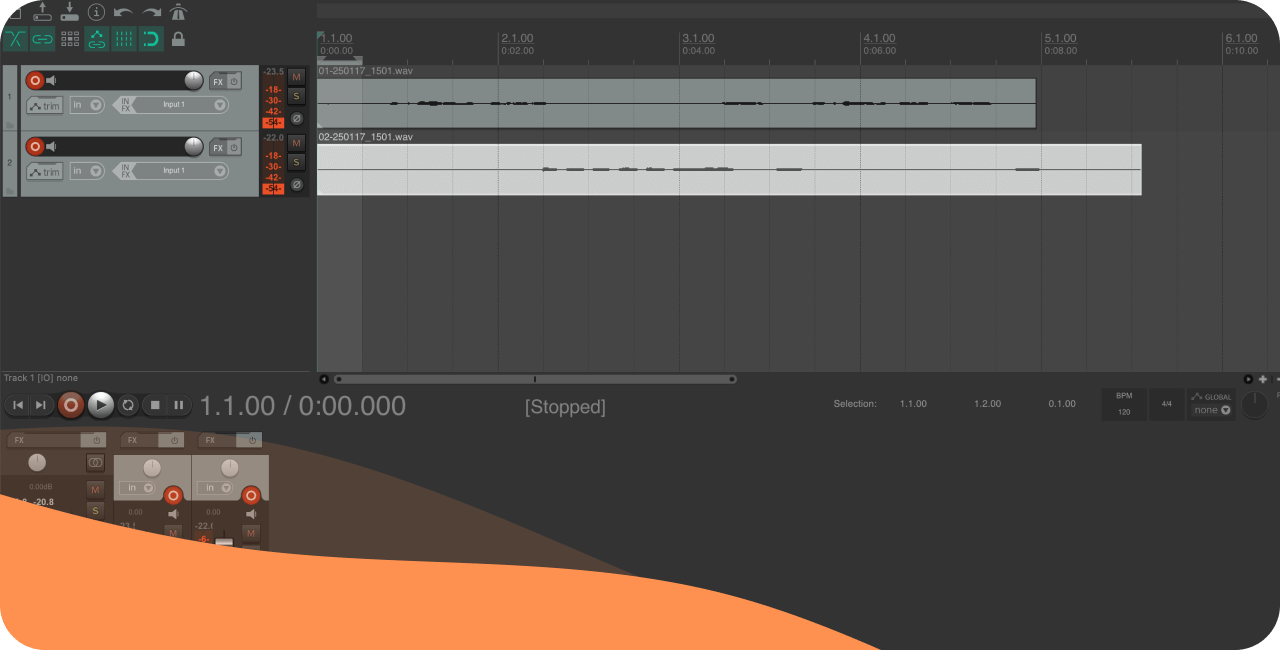
Key Features:
- Fully customizable interface.
- Unlimited tracks and effects per project.
- Supports most file formats.
- Extensive plugin compatibility.
Pros:
- Affordability: Free trial with a low-cost license for personal or professional use.
- Lightweight: Runs smoothly on less powerful systems.
- Customizable: Tailor the interface and features to your workflow.
Cons:
- Steep learning curve: Requires time to explore and understand its potential.
- Basic default plugins: May need third-party plugins for advanced work.
Ease of Use: Moderate to Challenging
Reaper’s flexibility can be daunting initially, but experienced users will appreciate its depth and efficiency.
Hindenburg Pro
Hindenburg is designed specifically for radio producers and podcasters, focusing on storytelling and spoken-word content.
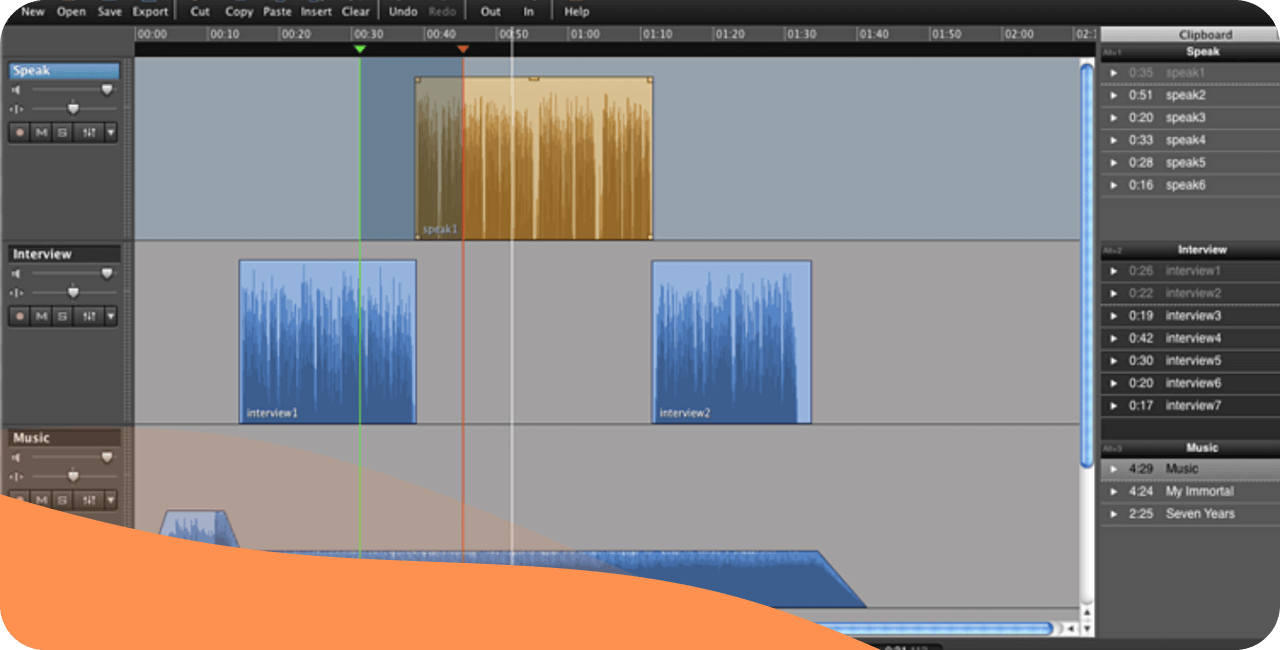
Key Features:
- Auto-leveling for consistent audio quality.
- Voice profiler for optimal sound adjustments.
- Non-destructive editing.
- Export directly to podcast hosting platforms.
Pros:
- Specialized tools: Tailored for radio and podcast production.
- Ease of use: Streamlined interface designed for storytellers.
- High-quality output: Focuses on clarity and balance.
Cons:
- Cost: Expensive for the Pro version.
- Limited scope: Less suited for music or other audio-intensive productions.
Ease of Use: Easy to Moderate
Hindenburg is built for storytellers rather than engineers, making it accessible but powerful.
Logic Pro
Logic Pro is a professional-grade DAW for macOS users. It offers a comprehensive suite of tools for audio editing and music production.
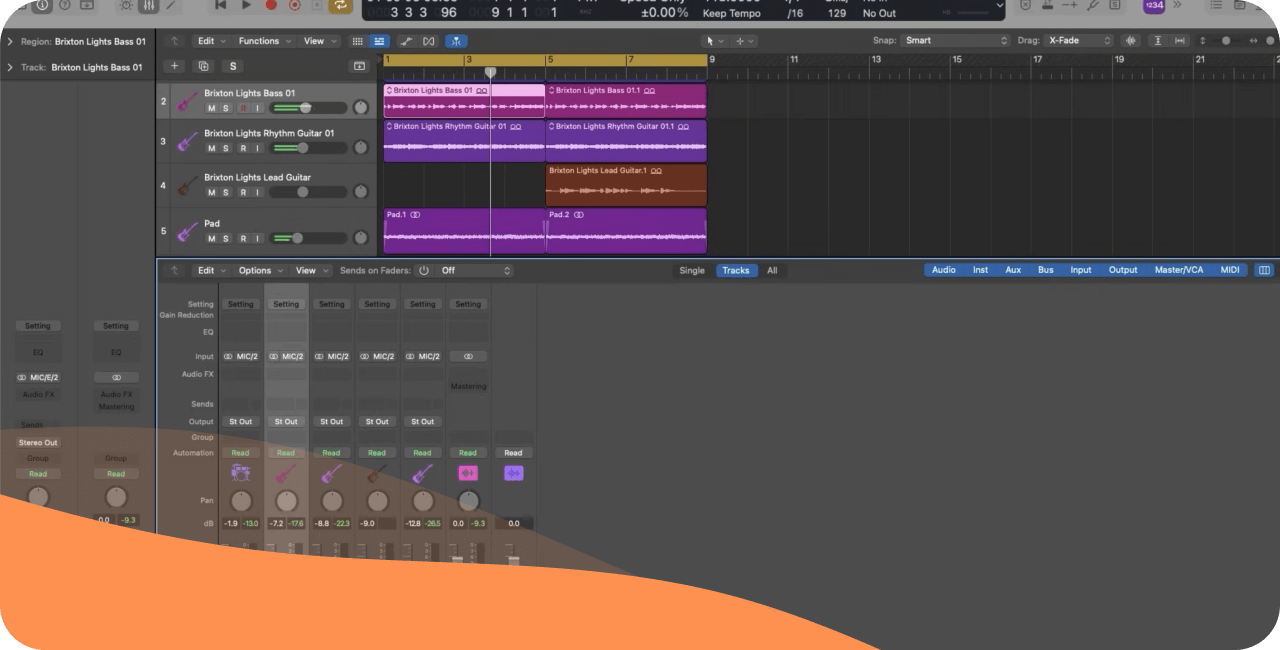
Key Features:
- Advanced MIDI tools and audio effects.
- Multi-track editing with powerful automation features.
- Extensive sound library.
- Seamless integration with GarageBand projects.
Pros:
- Professional features: High-quality plugins and tools.
- One-time cost: No subscription required.
- User-friendly: Designed for Apple’s ecosystem.
Cons:
- Platform limitation: Only available on macOS.
- Resource-intensive: Demands a high-performance system.
Ease of Use: Moderate to Challenging
Logic Pro offers a balance of simplicity for beginners and depth for professionals, but mastering it takes time.
Pro Tools
Pro Tools is the industry standard for professional audio editing, widely used in radio, music, film, and broadcast production.

Key Features:
- Multi-track editing with extensive mixing tools.
- Integration with hardware controllers.
- Advanced audio effects and plugins.
Pros:
- Professional quality: Trusted by audio engineers.
- Collaboration tools: Cloud-based project sharing.
- Scalability: Suitable for small projects and large-scale productions.
Cons:
- Cost: High subscription fees.
- Complexity: Overkill for simple edits.
Ease of Use: Challenging
Designed for professionals, Pro Tools has a steep learning curve but unparalleled capabilities for complex projects.
Frequently asked questions: Edit radio shows
How can I start my own radio show?
To start your own radio show, you need to begin by defining a concept and format. You’ll then need to acquire the necessary equipment before you can begin broadcasting. You can take a look at our full guide here!
How to prepare a radio script?
Preparing a script will help you remember key points during your radio show! Discover our top tips here.
Where can I find royalty free music for my radio show?
Using royalty-free songs during your radio shows is a great way to incorporate music without having to pay for a full music license. Take a look at our guide here.
How long does it take to edit radio shows?
The time it takes to edit radio shows will depend on your ease with the chosen editing software, as well as the length of your show, and the amount of elements that you want to add or remove. As you get more comfortable with the process, editing your radio shows will become much easier and quicker!
Selecting the best software to edit radio shows depends on your needs, budget, and level of expertise. Beginners may prefer the simplicity of GarageBand or Hindenburg, while professionals might lean towards Adobe Audition or Pro Tools for their advanced features. Reaper offers a middle ground, combining affordability with professional-grade tools. Each option has its strengths and weaknesses, so explore the trial versions to find the one that best suits your workflow. Happy editing!
Don’t have your own radio station yet? Launch a free 14-day trial with RadioKing today!
